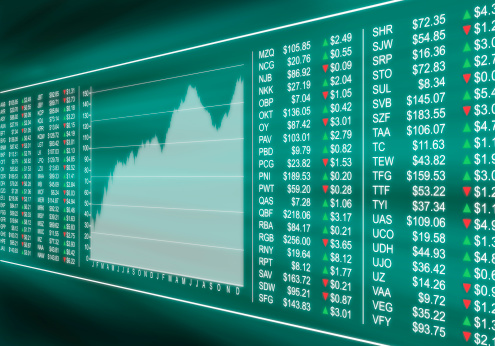Published by Jake Bleicher and Omani Carson
Conservative investments are often associated with lower portfolio expected returns. The investment community has been indoctrinated with the notion that risk and return are correlated in a linear function. To maximize return, you must accept higher volatility and to minimize risk you must forgo returns. In a bull market, this relationship holds some merit but over the course of a business cycle conservative investment portfolio management tends to sidestep this theory. By minimizing risk, conservative portfolios are designed to limit losses during bear markets.
To illustrate the power of limiting downside risk, consider two portfolios: A and B. Portfolio A is expected to generate 5% annual returns and portfolio B 10% annual returns during an up market. However, in a market correction, portfolio A is expected to decline by 20% and portfolio B by 40%.
If the market experiences 5 years of positive returns and 1 year of negative returns, $100 invested in portfolio A would be worth $102 while portfolio B would be only $97. Assuming 10 years pass before a market correction, portfolio A would be worth $130 and portfolio B $155.
Under the 10 year scenario, the conservative portfolio achieved 84% of the return that the more aggressive portfolio did but only took half as much risk. If the risk and return relationship were linear, taking half the risk should lead to half the return which is clearly not the case.
In practice, returns are unpredictable and risk is arguably unobservable even in hindsight. If a portfolio generated 7% returns over the past 5 years, how much risk did it take? Did it take less risk than a portfolio that generated 12% returns? What about a portfolio that lost 2%? Instead of attempting to quantify risk by measuring historic volatility, let’s simply define risk as permanent loss of capital. The biggest risk facing an investor with $100 is that at the end of the investment horizon, there is less than $100 remaining.
Modern portfolio theory hinges on the belief that if we know an asset’s expected return, risk (σ), and its correlation with other assets, then an optimal portfolio can be generated for any interval along the risk/return spectrum. It’s true, if we knew today what stocks and bonds would return over the next 10 years, it would be easy to generate an optimal portfolio.
Many academicians have spent careers trying to forecast capital market expectations. While theorists pursue the Holy Grail, practitioners should focus on limiting downside risk. Specifically, capital preservation should be paramount to generating returns.
Many investors find that modest returns are sufficient to pursue their long-term investment strategy if their portfolios don’t experience significant declines. Conservative and aggressive portfolios have become synonymous with bond-heavy and equity-heavy portfolio allocations. This is due primarily to the volatility exhibited by each asset class over the past 50 years.
If the overarching goal is to prevent a permanent loss of capital, then rigid adherence to what worked previously may not guarantee future success. In a low interest rate environment, perhaps bonds are not the best way to avoid losing capital. Conservative investment portfolio construction requires a dynamic approach; blindly allocating 80% of a portfolio to bonds might not be “conservative” as rates begin to rise. Instead, conservative portfolios should be protected against permanent loss of capital regardless of what assets they hold.
—
Content in this material is for general information only and not intended to provide specific advice or recommendations for any individual. No strategy assures success or protects against loss. The illustrations provided are not representative of any specific situation. Your results will vary. The hypothetical rates of return used do not reflect the deduction of fees and charges inherent to investing. Stock investing involves risk including loss of principal. Bonds are subject to market and interest rate risk if sold prior to maturity. Bon values will decline as interest rates rise and bonds are subject to availability and change in price.


